A couple of news bits and a personal announcement to tackle this week, so let’s get right to it.
MILLION AIRS
About a week ago, Marvel started to make a big deal over Star Wars #1 eclipsing 1,000,000 pre-orders from various retail outlets. While the company hinted at some of this quantity coming from less traditional sources, the number is still quite impressive, boasting the best direct market numbers for a single printing of a single issue in over twenty years. Despite all of the headache inducing rabble that I’m about to detail, that’s a number everyone involved with the creation, sales and marketing of the series should be proud of.
Now if you’ll excuse me, I’m going to pound my head against my keyboard while I detail the variant structure of this particular release.
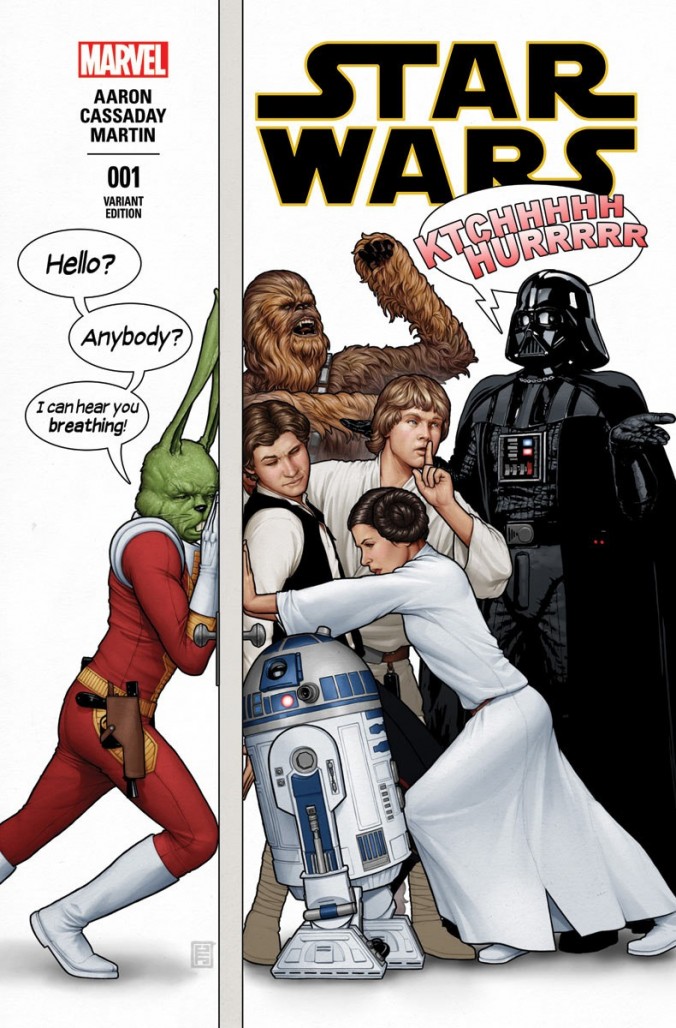
As you’ve probably heard by now, there are an impressive amount of variant covers being produced for this comic. To start, Marvel tossed a grand total of 13 wide-market variants on top of the regular comic for all retailers to order and obtain. These 13 books had qualifiers that ranged from “1 for every 15 copies ordered” to “1 for every 500 copies ordered”. Four of them required retailers to exceed 200% of their Original Sin #8 numbers in order to get any books in – which is probably the clearest indication of where Marvel wanted the book to be in terms of sales. Original Sin #8 clocked in at an estimated 90,478 copies sold, which means they were probably aiming at the 200,000 as a “worst case scenario”.
These alone wouldn’t have brought Star Wars #1 even close to the 1,000,000 mark – so where does all that extra push come from? Many are pointing in the vague direction of alternative distribution and awaiting news on what nerd box corporation sprung for a few hundred thousand copies – and while that’s probably part of the answer, a good chunk is also coming from the retailer exclusive variants Marvel offered retailers.
In one of their missives to the retail community, Marvel let it be known that any retailer or retail group could have their own variants produced. These variants would be completely unique and would potentially utilize some big name talent to create a unique image that would appear on a cover exclusive to that retailer. The catch? You had to order at least 3,000 copies and order 200% more of the regular cover than you did for Original Sin #8. It appears quite a few retailers have taken them up on this offer, as the total of variants floating out are currently sitting at 57. Now, some of these are black and white “sketch” variants of the retail exclusive variants, which you could seemingly produce as little as 1,500 copies of, but the point remains: Marvel went full variant crazy when pushing this book. Will it work for them? In the short term, of course. They’re going to have one of their biggest January’s in a long time thanks to Star Wars alone, probably, and there will almost assuredly be enough product on the shelves to meet whatever demand might arise. In the long term? When a company digs this deep into variants and qualifiers, I always worry about the long lingering after effects. The practice of asking retailers to potentially overextend themselves to chase rare items almost always ends with product chocking out storage space and back issue bins. It manipulates the regulatory curve of supply and demand, and takes cash on hand and turns it into dead weight that’s harder to turn over, both of which can and will result in various levels of hardships. Too much of this and a store, a company, or an industry breaks. And wouldn’t that be fun.
FAILURE TO LAUNCH
Last week, the DC solicitations for March revealed a culling for the company, and the internet had some words about it. Because of course it did. The company is heading into their big move across the country with quite a few stagnant books and a line-wide crossover eating up their publishing schedule. In short, it was the right call to dust a large portion of their books in order to arrive back in June with a refocused creative direction. That said, the sheer volume of titles on the chopping block still makes this feel like a defeat of some kind.
What DC needs here is for their PR department to pick up the copious amount of slack that’s roped on the floor. I know they’re already having a hard time convincing people that Convergence is going to be a big, important thing with the structure they chose, but they really shouldn’t be spending too much time and effort on that. Convergence is a crossover series, and it’s been designed as a two-month respite from The New 52 universe. Each and every one of their 40 two part minis seem to nudge the reader in the ribs and say, “Hey, remember when this was happening?” – and it’s going to do very little in the way of drawing a wide audience. June, on the other hand, stands a chance to be spectacular, and the company should be teasing it now. As it stands, DC looks like it’s flailing as a large chunk of their newly launched books limp to an end, and others that were a bit long in the tooth drop along side them. They need to come out and say this is all in service of something, or else people are going to run with a less positive narrative. It’s all about perception, and right now, DC is losing the battle. Here’s hoping they win the war.
ON A PERSONAL NOTE
As of December 31st, I will no longer be the manager of a comic shop. After spending a little over 8 years at Wizard’s Comics, I’m moving on to a different role within this great industry. Unfortunately, I can’t tell you what that is yet – but I thought it would be pertinent to let you all know of this change, as it will clearly effect what I write for this site. A hint regarding the future: while I won’t be a store manager, I will still be writing similar articles about the industry for Comics Beat, and they will start on January 12th. You might be surprised. You probably won’t be.
Until then, you’ll probably see me contribute the odd news post or opinion piece here or there, but otherwise, I will be busy putting together the next phase of my life – so if we don’t talk until then, have a fantastic holiday season!


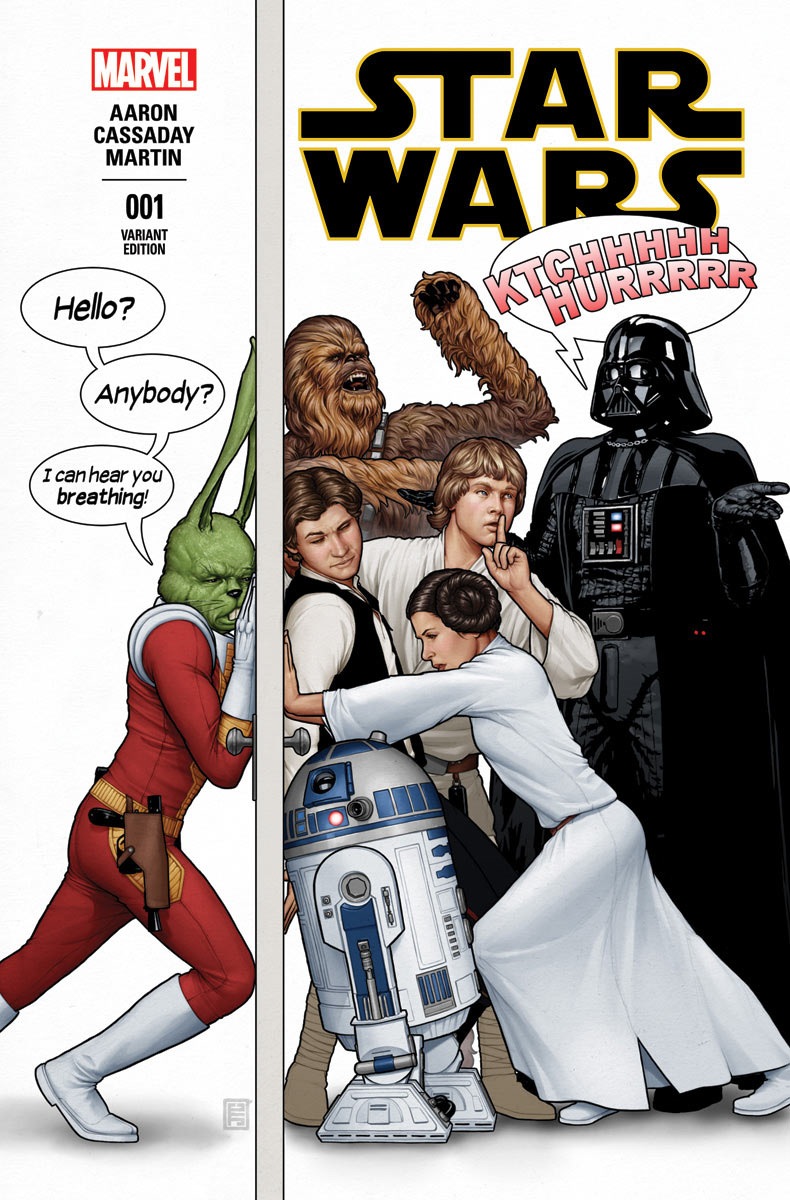
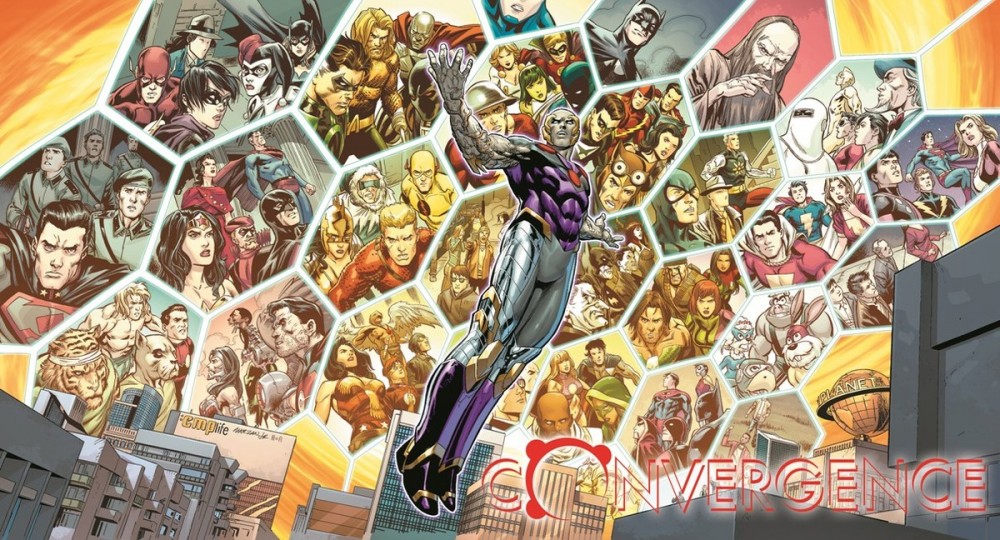
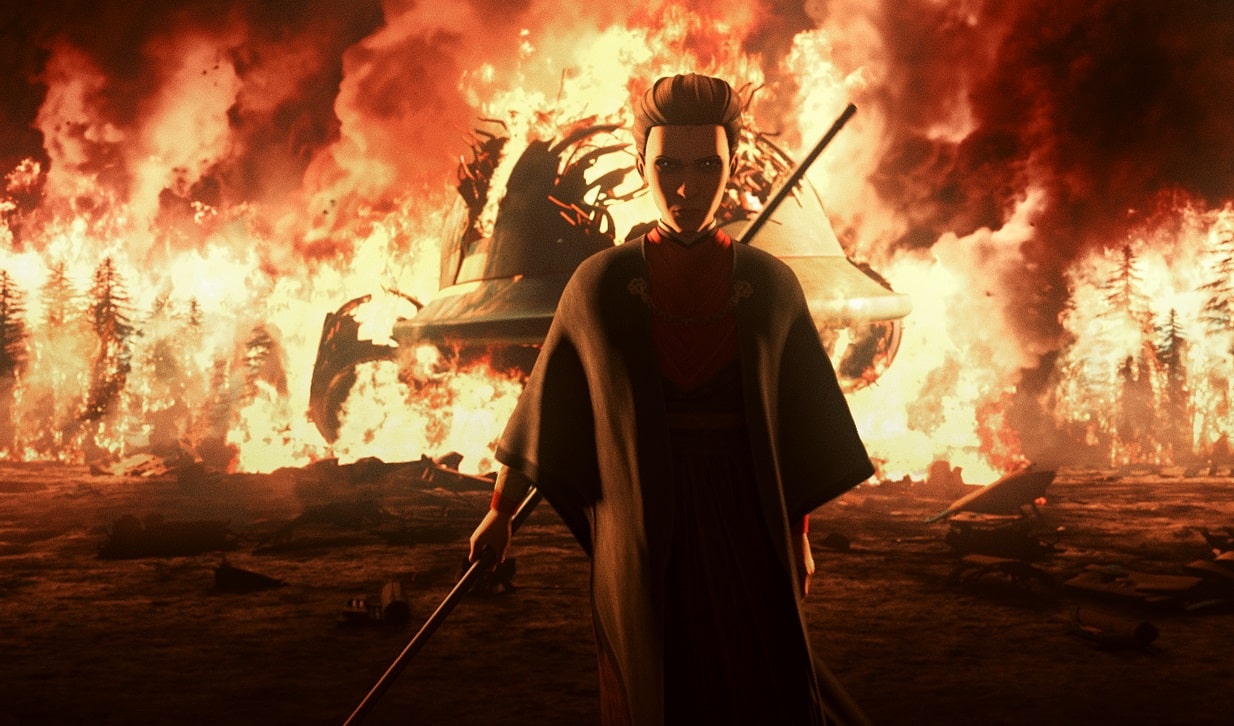
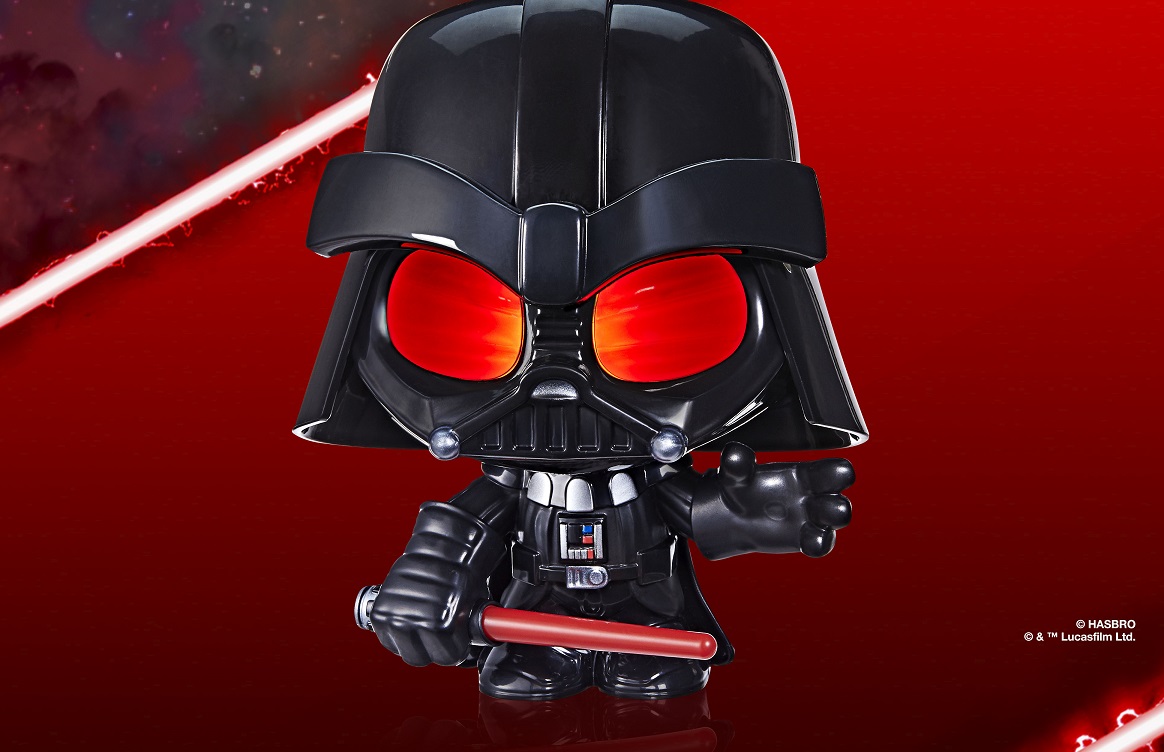



” The practice of asking retailers to potentially overextend themselves to chase rare items almost always ends with product chocking out storage space and back issue bins”
===
This has nothing to do with Marvel or any other company that offers the option. Retailers can simply NOT buy them. No one forces a retailer or a customer to buy any variant. Marvel is filling a need in the marketplace here; you may not like it, but it’s there. Some people enjoy their comics in this manner.
It’s true that no retailer *has* to buy them. The danger to the market, as I see it, is that retailers have finite resources and if they choose to follow a variant frenzy like this, they’ll cut loose smaller circulation/smaller press comics that month to pay for them. If they’re stuck with a pile of unsold copies: less revenue that month, less cash flow for the following month’s orders, and so on. I wish Marvel would sell a million of them — all with the same cover. *That* would be a healthy thing for the market.
You bring up a good point; the sheer volume of comics today tends to push out some of the smaller ones. The numbers don’t lie; people like Batman and Spider-Man. With so many titles out from these characters, only so many dollars are left for your average Wednesday Warrior for the B, C and D level characters, let alone indie titles.
So, in that respect, it *is* the fault of Marvel. Their huge Star Wars push sort of takes away from their ‘lesser’ titles.
Personally, I don’t blame DC for doing what it did, even though 3/4ths of the axed titles are on my pull list. Hey, low sales are low sales any way you cut it. I tried word of mouth to get people to buy books like Star Spangled War Stories and Infinity Man & Forever People. I really can’t help it if they couldn’t find room for them amidst the 37 Bat books they’re buying every month. Of course, DC throwing those books out there cold with ZERO PROMOTION AND MARKETING certainly didn’t help matters.
Convergence and the 40 minis? Nah, think I’ll pass on this one. In my opinion, it’s nothing but a simple money grab promoted by DC as something so Earth-shattering, anyone who doesn’t buy the whole shebang will end up in a state of deep depression for life. Yeah, right. Reality is, it’ll be two months of a few semi-interesting books and mostly throwaway garbage to get the fanboys talking until the New 52 returns in June.
And what will this, ahem, “return” actually be? Seems like more of the same. DC’ll replace the dearly departed books with its usual assortment of new Bat books (promoted to the stars and beyond), revivals of a few titles, including no doubt, a couple books cancelled less than a year ago. Maybe a couple titles featuring characters who’s had chance after chance after chance after cha…..well, you get the idea. Oh, just to say they’re being “creative”, they’ll throw a book or two out there that features a new or long-lost character and give them zero promotion. And scratch their collective heads when those books flop from the start. Lather, rinse, repeat.
Just remember, DC (and other publishers as well): A “jumping-on” point also serves as an excellent “jumping-off” point as well.
Best of luck, Brandon, enjoyed your articles.
I hope we still manage to get the retailer’s perspective here on the Beat.
Variants for retailers and Loot Crate for publishers. Pretty soon the entire industry will be so celebrated and comics so self-congratulatory it might be able to finally move on from readers.
If we try hard enough, we can get that two separate economies thing going like Wall Street and Main Street.
That six foot tall green rabbit is from a storyline which began back in 1977 in Marvel’s Star Wars #7. George Lucas disliked it so much that he told Marvel to change the creative team on the book so Roy Thomas was out and Archie Goodwin was in. Lucasfilm even issued a press release announcing that the comic had a new creative team and indicating that they felt the title was now on the right track. Roy Thomas complained at the time that Lucas had made no suggestions as to what to do in the story following the movie adaptation which ended in issue #6 and was thus annoyed that after offering him no guidance, Lucas just ordered him replaced with another writer. Lucas paid more attention to the comics in those days, so much so that when Marvel’s adaptation of The Empire Strikes Back (with the big reveal about Darth Vader being Luke’s father) was published weeks before the film was released (which Marvel had promised not to do) Lucas personally called the head of Marvel Comics to complain–at his home.
Ahhhhh, the frustrating dichotomy of George Lucas — the creator of some of the most memorable characters in fantasy history, and some of the worst. George gave a thumbs down to Jaxon, but a little over 20 years later, he came up with Jar Jar Binks? And was George out of the room when someone okayed the Star Wars Holiday Special with Chewbacca’s family that included Itchy and Lumpy?
Oh — and nice way to throw Roy Thomas under the bus back then, George. He *only* championed doing a Star Wars adaptation at Marvel Comics when it was an unknown quantity and, in fact, was considered a very questionable commercial venture. This was in the days before a movie was given a huge publicity machine that started months, or even years, in advance of its’ release. Back in 1977 there was only Starlog magazine and a couple of other fanzines that offered tidbits of what was to come. Roy really went to bat for that movie when it was far from a sure thing.
Roy eventually won that battle. He wrote and edited the comic book adaptation (drawn by Howard Chaykin) that started to hit newsstands three months before the movie arrived at theaters. I think it did a lot to raise awareness for the film before it came out. I know it whetted my appetite! I knew what was coming and was waiting in line at the Chinese Theatre in Hollywood that first weekend.
(The rest, as they say, is history. After the movie was released, that adaptation became Marvel’s biggest selling comic of the decade.)
GIANT GREEN STAR WARS RABBIT!
Comments are closed.